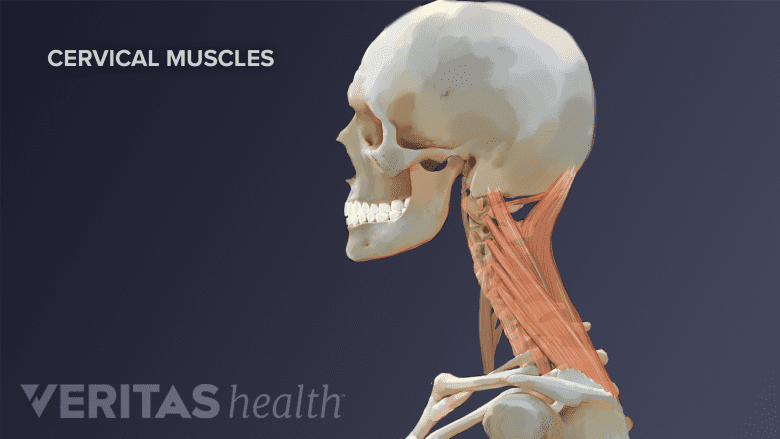Chin tucks are typically one of the key exercises recommended for keeping the head aligned above the spine, rather than drifting forward into poor posture. When done regularly and with proper form, chin tucks can help improve the neck’s strength, flexibility, and function.
The chin tuck exercise strengthens the muscles that support a good posture.
In This Article:
Step-by-Step Guide to Perform a Chin Tuck
Chin tucks can be performed while standing or sitting. Here is a simple way to do chin tucks for a beginner:
- Sit upright and look straight ahead with the ears directly over the shoulders.
- Place a finger on the chin.
- Without moving the finger, pull the chin and head straight back until a good stretch is felt at the base of the head and top of the neck. (There should now be some separation between the chin and finger.)
- Hold for 5 seconds if possible.
- Bring the chin forward again to the finger.
- Repeat for a total of 10 times, or as tolerated.
In the beginning, it can help to have the finger as a point of reference. As the chin tuck becomes more comfortable to perform, it may no longer be necessary to hold up the finger.
A modification of the chin tuck that further emphasizes strengthening of the deep neck flexor muscles is to apply resistance with a hand placed under the tucked chin and apply light downward pressure into the hand, using the 5-second hold time approach.
Tips to Perform Chin Tucks Throughout the Day
It is recommended to perform 5 to 7 sets of 10 chin tucks in the course of each day. In addition to regularly stretching and strengthening the neck and upper back, performing chin tucks throughout the day can serve as a consistent reminder to use good posture.
Doing 10 repetitions of 5-second chin tucks just takes a minute. Some examples of easy ways to fit a set of chin tucks into a busy schedule include:
- Morning routine. Whether it is between sips of coffee, after getting dressed, or before brushing teeth, chin tucks can be worked into a morning routine.
- Commute. It is still important to use good posture while driving a car, riding the train, or taking other modes of transportation. Doing a few chin tucks while waiting at some red lights can add up over time.
- Breaktime. Whether sitting at a desk or relaxing in a breakroom, chin tucks can help keep good posture top of mind.
There are many possible ways to fit 5 to 7 sets of chin tucks into a day. When starting out, it may help to think about the next day and plan for the best times to do chin tucks.
How Chin Tucks May Reduce Neck Pain
Chin tuck exercises strengthen neck muscles, improving posture and reducing strain.
Poor posture, including forward head posture, has long been suspected as a contributing factor in some cases of neck pain due to increased stress on the cervical spine and its supporting structures. Chin tucks can help:
- Strengthen the deep cervical flexors, lower cervical extensors, and other muscles that keep the head pulled back in good posture with the ears above the shoulders.
- Stretch the scalene muscles along the front sides of the neck and suboccipital muscles at the base of the skull.
The combination of strengthening and stretching achieved by chin tucks may also help ease muscle tension in the neck, head, upper back, and shoulders.






